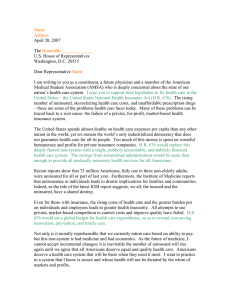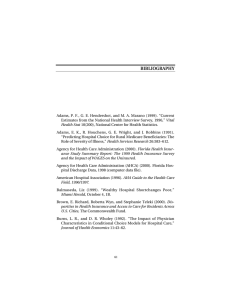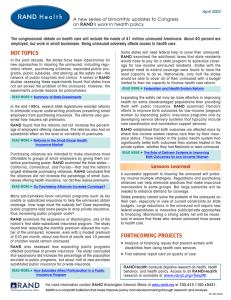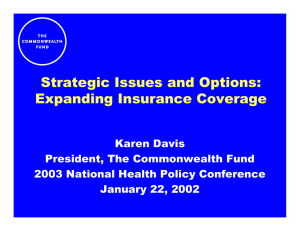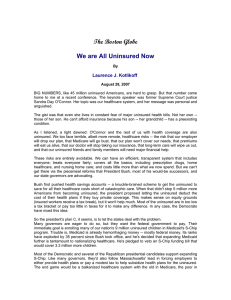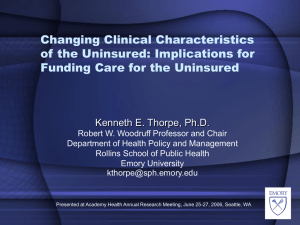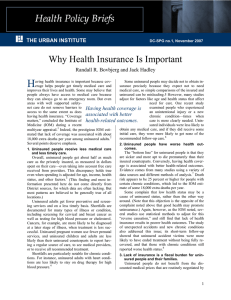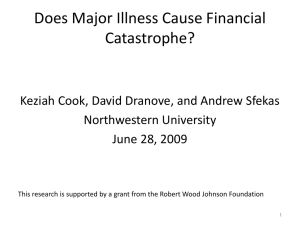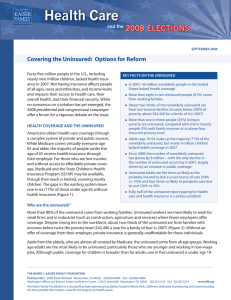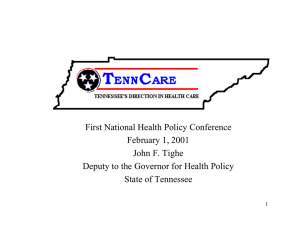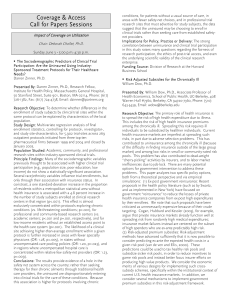Data, Methods & Measurement: Commentary Vincent Mor, Ph.D.
advertisement
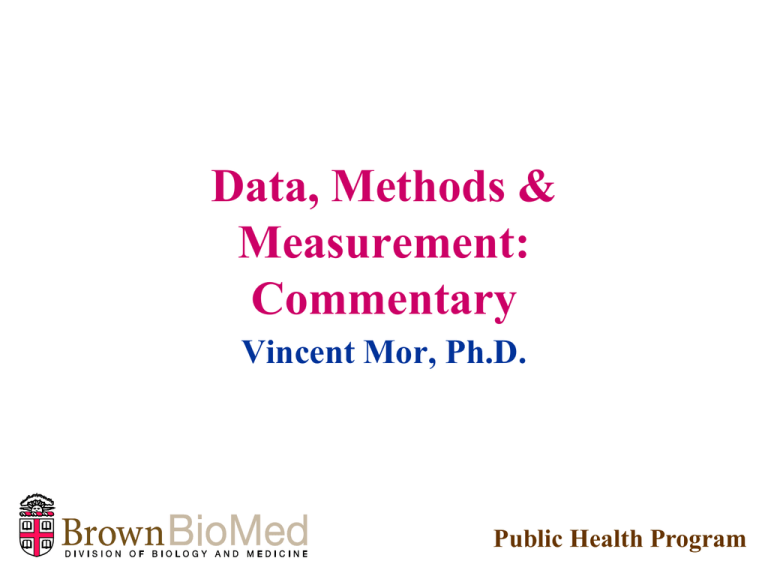
Data, Methods & Measurement: Commentary Vincent Mor, Ph.D. Public Health Program Common Issues All authors call for more and more detailed data What health care workers DO; not just a count What is an error and how is it avoidable Understanding insurance affordability to understand health insurance choices and preferences All call for more detailed data on physicians, hospitals and health care consumers. But, labor market variation, differences in medical culture and practice as well as local insurance market variation mean universal data is needed Conflict between detailed data on a sample and limited data on the population Health Care Workforce Authors make a good point that “head counts” are not enough and that counting specialists is not enough; we need to know what providers do Volatility of workforce supply estimates seen most clearly in nursing; after years, no longer a shortage in this economic downturn. Now that over 50% of physicians are women and employed, will labor supply fluctuate? Implications of workforce planning efforts? Health Care Workforce (cont) While counting may be insufficient, using claims does offer a picture of new developments Recent NEJM paper documented rise of hospitalists and regional variation Recent JAMA paper examined “continuity” of inpatient and outpatient physician care Advantage of aggregating all provider behavior from UPINs via claims, given large labor market variation; BUT, requires universal linked claims Need to explore ways to cross-walk universal claims data with more detailed data collected on a sample of providers. The Science of Health Care Delivery Important to identify “preventable” harm; one reason its been so difficult to develop rigorous measures to evaluate and compare providers’ safety profiles To differentiate type of harm, to adjust for preventability or to link processes to outcomes requires detailed data on treatment events, the people treated and the outcomes experienced All complicated by heterogeneity of providers and “patient sharing” that complicates attribution Health Care Delivery (cont) Regional variation in practices also alters the denominator and context Re-hospitalization of post-acute SNF Medicare pts varies from 10% in 30 days to over 30% by state; correlates with overall Medicare spending ; errors during hospitalizations will be more prevalent Hospital Adverse drug reactions rise with hours post admission, even controlling for admit time Very meaning of “avoidable errors” can change as a function of Managed Care interventions to discharge patients post-surgery Finally, process to outcome relations not simple The Uninsured Identify 3 key issues we need to understand better to develop better policy Why are folks not insured The implications of being uninsured Defining underinsurance All need better and more complete survey data with panels able to address changing insurance patterns with changing personal employment and health situations The Uninsured (cont) Propose a longitudinal panel frequent enough to capture the many subtle changes in coverage, income and competing household choices enriched with data on available choices States’ policy differences, local market conditions, provider competition and volatility of the insurance market means planning such a comprehensive effort on a sample will miss a lot Might consider a transparent insurance choice market like Part D BUT this implies universal insurance mandate to get information on all people Summary Papers on very different policy issues clearly identify the data needs and challenges In each case, the tension between information depth and universal information can be seen BUT labor, insurance and provider markets are so different Not possible to have all data on all events of interest to all researchers need models of integrating claims and “research” data Use Claims as a sampling frame (MCBS, NHATS, etc.) Predict behavior of population based upon research data Research data may only be a hueristic Big Challenge to integrate these kinds of research








